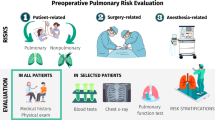Abstract
Purpose
We compared 1 versus 0.5 μg/kg bolus remifentanil versus placebo in alleviating pain due to chest drain removal. Effects on sedation, respiratory rate (RR), oxygen saturation, heart rate (HR) and blood pressure were also evaluated.
Methods
Sixty patients following cardiac surgery were enrolled in this prospective, randomized, double-blind clinical trial. Patients were randomized to 1 or 0.5 μg/kg remifentanil or placebo. All received standardized analgesia. Visual analog scale (VAS) pain scores and cardio-respiratory data were recorded pre-procedure, at drain removal and at 2 min intervals post procedure.
Results
Patients receiving remifentanil had statistically significantly less pain than placebo at drain removal [median (25–75%) VAS: 0.5 μg/kg remifentanil 1 (0–2) versus placebo 5 (3–6), P = 0.001; 1.0 μg/kg remifentanil 0 (0–2) versus placebo 5 (3–6), P = 0.0001]. VAS scores between remifentanil groups were equivalent. Remifentanil 1 μg/kg versus placebo at drain removal revealed significant reductions in HR [mean ± standard deviation (SD): 76 ± 15 versus 92 ± 10, P = 0.01], blood pressure [mean ± SD: 103 ± 22 versus 131 ± 14, P = 0.01] and RR [median (25–75%): 10 (8–12) versus 16 (14–18), P = 0.001]. Remifentanil 0.5 μg/kg versus placebo at drain removal revealed significant reductions in blood pressure [mean ± SD: 116 ± 19 versus 131 ± 14, P = 0.02] and RR [median (25–75%): 12 (10–13) versus 18 (16–18), P = 0.001]. SpO2 at drain removal was significantly reduced when comparing 1 μg/kg remifentanil versus placebo [median (25–75%): 94 (88–97) versus 97 (96–98), P = 0.049] but not 0.5 μg/kg remifentanil versus placebo. Two patients became apnoeic following 1 μg/kg remifentanil, necessitating respiratory support. Sedation scores in all groups were similar.
Conclusions
Bolus remifentanil at the tested doses delivers excellent analgesia, but 1 μg/kg remifentanil results in respiratory depression. Remifentanil bolus at 0.5 μg/kg is safe and effective for chest drain removal after heart surgery in ICU.

Similar content being viewed by others
References
Mimnaugh L, Winegar M, Mabrey Y, Davis JE (1999) Sensation experienced during removal of tubes in acute postoperative patients. Appl Nurs Res 12:78–85
Carson MM, Barton DM, Morrison CC, Tribble CG (1994) Managing pain during mediastinal chest tube removal. Heart Lung 23:500–505
Paiement B, Boulanger M, Jones CW, Roy M (1979) Intubation and other experiences in cardiac surgery: the consumer’s views. Can Anaesth Soc J 26:173–180
Singh M, Gopinath R (2005) Topical analgesia for chest tube removal in cardiac patients. J Cardithorac Vasc Anaesth 19:719–722
Akrofi M, Miller S, Colfar S, Corry PR, Fabri BM, Pullan MD, Russell GN, Fox MA (2005) A randomized comparison of three methods of analgesia for chest drain removal in postcardiac surgical patients. Anaesth Analg 100:205–209
Joshi VS, Chauhan S, Kiran U, Bisoi AK, Kapoor PM (2007) Comparison of analgesic efficacy of fentanyl and sufentanil for chest tube removal after cardiac surgery. Ann Cardiac Anaesth 10:42–45
McMurray TJ, Bhanumurthy S, Groogan F (1995) Low dose propofol for chest tube removal. Anaesthesia 50:556
Bryden FM, McFarlane H, Tunstall ME, Ross JA (1997) Isoflurane for removal of chest drains after cardiac surgery. Anaesthesia 52:169–178
Friesner SA, Curry DM, Moddeman GR (2006) Comparison of two pain-management strategies during chest tube removal: relaxation exercise with opioids and opioids alone. Heart Lung 35:269–276
Broscious S (1999) Music; an intervention for pain during chest tube removal after open heart surgery. Am J Crit Care 8:410–415
Houston S, Jesurum J (1999) The quick relaxation technique. Effect on pain associated with chest tube removal. Appl Nurs Res 12:196–205
Glass PS, Gan TJ, Howell S (1999) A review of the pharmacokinetics and pharmacodynamics of Remifentanil. Anaesth Analg 89:S7–S14
Egan TD, Kern SE, Muir KT, White J (2004) Remifentanil by bolus injection: a safety, pharmacokinetic, pharmacodynamic, and age effect in human volunteers. Br J Anaesth 92:335–343
Ramsay MA, Savege TM, Simpson BR, Goodwin R (1974) Controlled sedation with Alphaxalone–Alphadolone. BMJ 11:656–659
Carrasco G, Molina R, Costa J, Soler JM, Paniagua J, Cabré LL (1993) Usefulness of sedation scales in ICU. A comparative randomized study in patients sedated with propofol, midazolam or opiates plus benzodiazepines. Intensive Care Med 18(Suppl 2):158
Riker RR, Picard JT, Fraser GL (1999) Prospective evaluation of the sedation–agitation scale for adult critically ill patients. Crit Care Med 27:1325–1329
Barnard J, Thompson J, Dunning J (2004) Can any intervention effectively reduce the pain associated with chest drain removal. Interact Cardiovasc Thorac Surg 3:229–232
Xu ZY, Wang X, Si YY, Wu JC, Zuo YX, Xue FS, Liu J (2008) Intravenous remifentanil and propofol for gastroscopy. J Clin Anaesth 5:352–355
Johnson KB, Swenson JD, Egan TD, Jarrett R, Johnson M (2002) Midazolam and Remifentanil by bolus injection for intensely stimulating procedures of brief duration: experience with awake laryngoscopy. Anaesth Analg 94:1241–1243
Phillips WJ, Halpin J, Jones J, McKenzie K (2009) Remifentanil for procedural sedation in the emergency department. Ann Emerg Med 53:163
Gaston-Johansson F, Gustafsson M (1990) Rheumatoid arthritis: determination of pain characteristics and comparison of RAI and VAS in its measurement. Pain 41:35–40
Jensen MP, Miller L, Fisher LD (1998) Assessment of pain during medical procedures: a comparison of three scales. Clin J Pain 14:343–349
DeLoach LJ, Higgins MS, Caplan AB, Stiff JL (1998) The visual analog scale in the immediate postoperative period: intrasubject variability and correlation with a numeric scale. Anesth Analg 86:102–106
Gallagher EJ, Bijur PE, Latimer C, Silver W (2002) Reliability and validity of a visual analog scale for acute abdominal pain in the ED. Am J Emerg Med 20:287–290
Acknowledgments
The authors thank the nursing staff of the Critical Care Departments of the Mater Misericordiae University Hospital and Mater Private Hospital for their help in completing this clinical trial.
Author information
Authors and Affiliations
Corresponding author
Rights and permissions
About this article
Cite this article
Casey, E., Lane, A., Kuriakose, D. et al. Bolus remifentanil for chest drain removal in ICU: a randomized double-blind comparison of three modes of analgesia in post-cardiac surgical patients. Intensive Care Med 36, 1380–1385 (2010). https://doi.org/10.1007/s00134-010-1836-2
Received:
Accepted:
Published:
Issue Date:
DOI: https://doi.org/10.1007/s00134-010-1836-2




